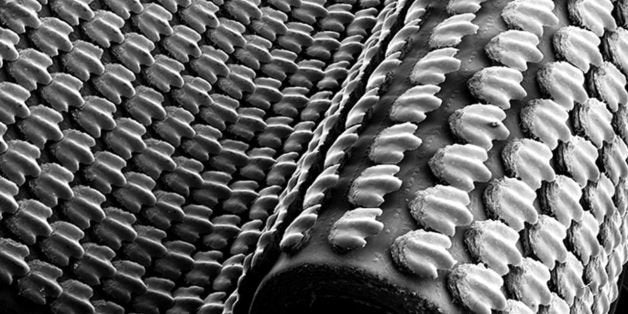
For years, biologists and engineers have tried to unravel the mysteries of shark skin -- and to develop a synthetic version of the amazing stuff for use in commercial products ranging from speed-boosting swimsuits to drag-reducing coatings for ship hulls.
Now, with the help of 3-D printing technology, scientists at Harvard University have taken one big step toward that goal. Their artificial shark skin mimics the unique properties of the real stuff.
Shark skin is covered with tiny toothlike scales. These "denticles" disturb the flow of water as a shark swims, reducing drag and increasing speed.
But “you can’t modify real shark skin,” Dr. George V. Lauder, a biologist at the university and a co-author of a new paper about the research, said in a written statement. So Lauder bought a piece of shortfin mako at a fish market, made a high-resolution scan of the skin, and created a computer model of a single denticle.
Next, Lauder and his colleagues replicated the denticle thousands of times to construct a detailed computer model of the skin. Then the scientists turned to 3-D printing to turn the model into a real-world material.
“We decided that the only way to embed hard denticles in a flexible substrate was the 3-D printer,” Lauder said.
After a year of work, they finally came up with a synthetic skin that did what they wanted it to.
“Seeing the [scanning electron micrograph] of the curved membrane with the denticles was a great moment for us.”
To test their synthetic skin, Lauder’s team covered a robotic flapping device with the material and tried it out in a water tank. They experimented with moving the device in different ways through the water -- holding the device in place, or using a wriggling motion to propel it through the water.
What did they find? Compared to a device fitted with a paddle coated with smooth material, a device with a faux shark skin paddle swam faster and used less energy. For example, at one setting the synthetic skin device was 6.6 percent faster and used 5.9 percent less energy than the smooth control device.
“That’s a huge effect, when factored over the entire lifetime of an animal that is constantly swimming,” Lauder told the BBC.
The paper describing the research was published in the Journal of Experimental Biology.
